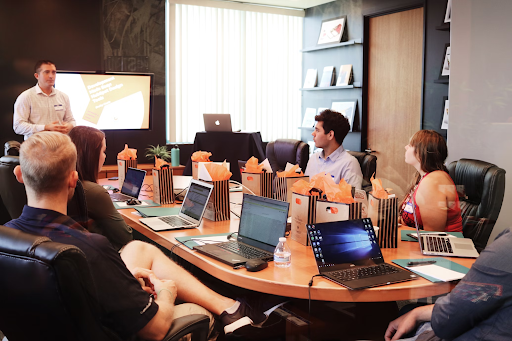
What makes an ideal leader?
In order to be a good leader, there are several attributes one must exhibit. These include the ability to delegate, strong communication skills, lots of self-confidence and a positive attitude even when the chips are down.
Then again, there will be great leaders that go above and beyond their call of duty to help engage and motivate employees. They will also be honest if talking to staff, show creativity when solving problems, and inspire others to do better.
However, there is one thing that good and great leaders need to do if they want to become an ideal leader - keep on learning. Ideal leaders will always want to ask questions but never assume they know everything. They won’t be afraid to make mistakes either but will want feedback on how to improve in the future.
But why is it important to keep on learning? And how can you go about increasing your knowledge or gaining a greater understanding about certain themes and topics?
Learning to lead
It is extremely dangerous for any leader to think they are the finished article. Even with the highest level of education possible and a great deal of real-world experience, there is still no guaranteed way of knowing what will happen in the future.
We can look at the past for clues or piece together predictions using present-day information, but trying to provide guidance through cold hard facts will do little to inspire. Instead, leaders must always be open to the idea of change.
By doing so, it becomes much easier to respond in unfamiliar or unknown situations. This attitude also helps when it comes to learning, as you will be a lot more willing to accept and apply new concepts or ideas. After all, we are living in a world where the half-life of any skill is about five years. Therefore, for businesses to stay relevant and remain in touch with the growing wants and needs of the customer, today’s leaders must always renew their perspective on skills and knowledge.
Unfortunately, this is easier said than done. It is fair to say that the majority of modern-day leaders will have been schooled in the classroom, where passively accepting new knowledge was the only option on offer. But for millenials, who now outnumber other generations in the workplace, traditional ways of training no longer cut it.
Some leaders may be more than happy to learn like they have always known, but if they are willing to accept the power of change in terms of skills and knowledge, they should also be unreserved in their attitude towards training. Millenials have grown up with access to extensive online resources, so the belief that learning should be an everyday occurrence already resides here.
However, traditional training doesn’t allow for such immediate learning to happen. As a result, leaders must look at implementing fast, relevant, and autonomous learning solutions, which not only increase their own intelligence and appreciation, but also that of other employees.
Learning how to learn
In the Global Human Capital Trends 2015 study by Deloitte, 85 per cent of respondents said that learning was either important or very important. Yet, more companies than ever before said they were also unprepared to address this issue.
In many respects, the answer is quite clear though. Organisations must find ways to connect and participate in learning, which not only challenge their employees’ way of thinking, but also provide them with the ability to become better people. Through greater collaboration that completes training in smarter and more efficient ways, we can all become ideal leaders too.
Such a strategy should concentrate on continual learning with long-term goals in mind. It is all well and good having people that want to learn, but they must also know how to build strong relationships, find relevant information, make sense of their observations and then share this knowledge with others.
It is well within the realms of possibility for a leader to instil a methodology like this into employees and the workplace too. A change in company culture might be required, but the resources and technology exists to make it happen.
The process of learning
If you think of learning as a journey, then you can continue to pursue it time and time again. The places you go and the destination you reach might be different every time, but you will be well equipped to handle whatever comes your way.
Finding new knowledge - The first step is about discovering new information but making sure it is always relevant and applicable. This can be quite difficult due to the profusion of data we are now producing, but regularly evaluating and assessing where information comes from will enable you to filter only the valuable stuff. In time, you will be able to develop a close network of trusted and intelligent sources that provide new perspectives on interesting subjects, but also increase your ability to make more informed decisions.
Using new knowledge – Finding things out and personalising it for our own intentions is one thing, but having the ability to actually apply this newly acquired knowledge is another. Thankfully, teaching techniques such as spaced repetition and gamification can give you complete control over the information you are receiving. After understanding what is being said, you can then actively do something about it, which contextualises and reinforces your learning. We all want to find meaning in our thoughts, feelings, and experiences, but learning can help us do this through critical thinking.
Sharing new knowledge - If knowledge has been passed onto you, then it is only fair you do this for someone else too. This could naturally happen during the course of a normal day, but you may also need to actively exchange resources, ideas, and experiences with colleagues as well. By working alongside others and collectively learning through collaboration or even competition, the whole business can benefit. What’s more, everyone involved in the learning experience will feel like a leader, as they have played a crucial role in the development of others.
Bring all of these elements together and every employee can become a leader in the workplace. Certain members of staff might not necessarily be giving orders or have overall command, but they will be exhibiting the most important attribute an ideal leader should possess – a desire to keep on learning.


